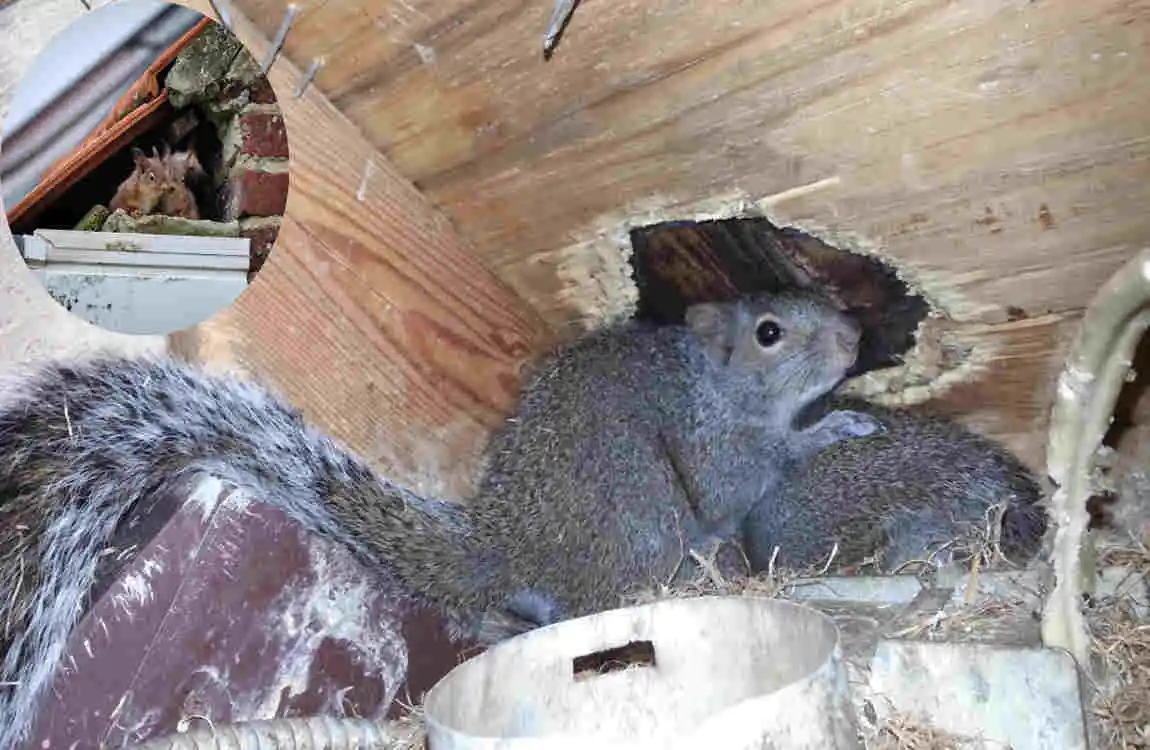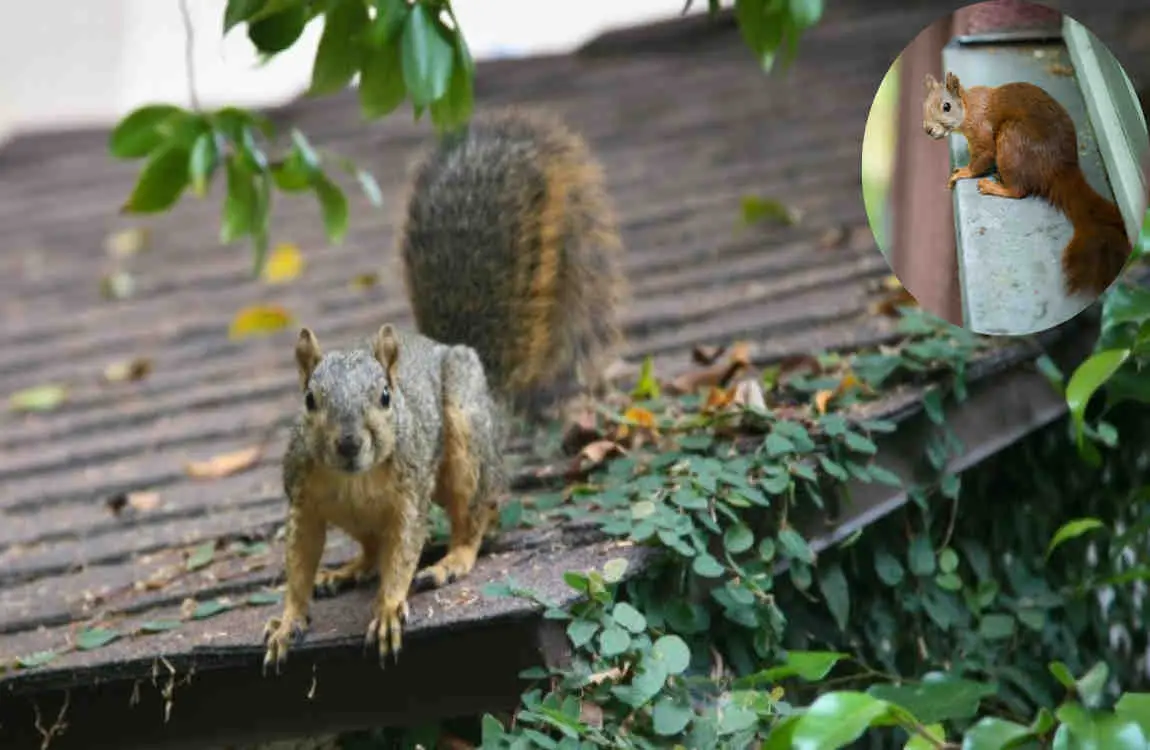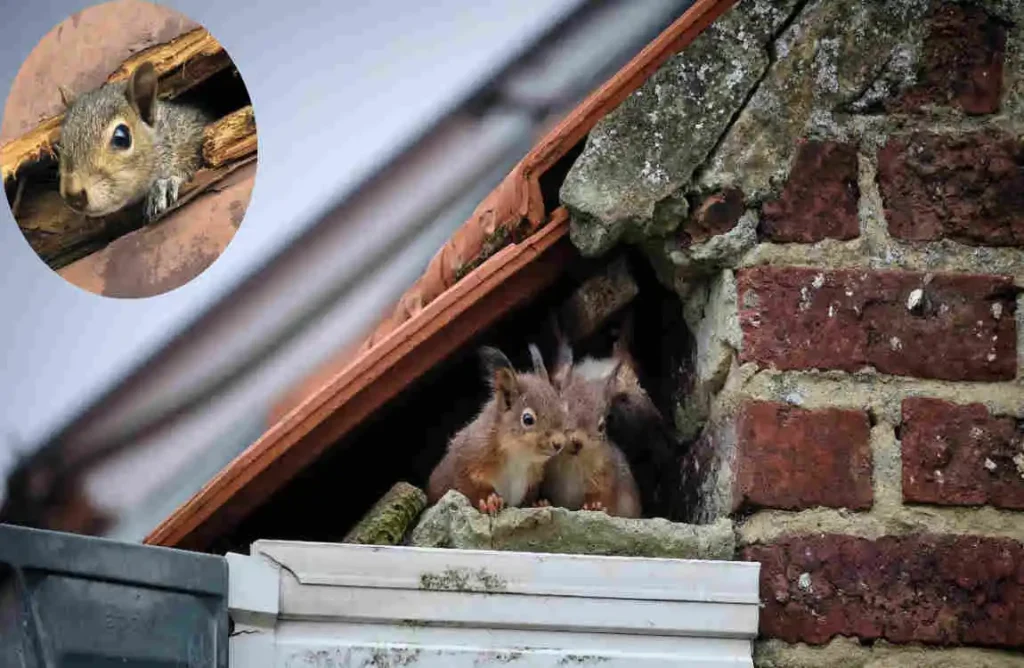Squirrels get into your house by seeking shelter, warmth, and a safe place to nest away from predators and the elements. They often enter through vulnerable spots like holes or gaps around the roof edge, soffit vents, chimneys, and damaged areas where they can chew through materials, making your attic or walls an ideal nesting place. These clever little creatures are attracted to homes because of the protection and resources they provide, and once inside, they can cause of house damage squirrels while trying to get in or out.
Common Entry Points for Squirrels in Houses

Squirrels are crafty little creatures. They can find their way into your home through surprising entry points.
Attics often serve as a prime target. Gaps in soffits or damaged vents provide easy access for these agile climbers. A small hole can quickly become an open invitation.
Rooflines also present opportunities. Squirrels tend to scale trees and leap onto roofs, seeking out weak spots around chimneys or loose shingles.
Don’t overlook the foundation of your home. Cracks and gaps around pipes create pathways directly into living spaces, while overgrown vegetation might conceal hidden entries.
Windows without screens pose another risk. An unsecured window can be just the right size for an adventurous squirrel looking for shelter or food.
Understanding where squirrels typically enter helps homeowners take preventive measures before they make a cozy nest in their attic or walls.
Damage Caused by Squirrels in Homes
Squirrels may seem cute, but they can wreak havoc in your home. Their sharp teeth and strong jaws allow them to gnaw through various materials. This includes wood, insulation, and even electrical wiring.
When squirrels house invade attics or crawl spaces, they often create nests from shredded materials found around the house. This not only damages your belongings but can also lead to hazardous conditions like fire risks due to damaged wires.
If you’re hearing noises in the walls or noticing unusual damage in your home, it might be time for a closer inspection. Ignoring these signs could result in more extensive repairs later on.
Prevention Methods to Keep Squirrels Out

You need to take proactive measures to keep squirrels out of your home. Start by sealing any gaps or cracks in your walls, roof, and foundation. These little creatures can squeeze through surprisingly small openings.
Next, check for potential entry points around vents and chimneys. Installing screens can effectively block their access while allowing ventilation.
Trim tree branches that overhang your house. Squirrels are excellent climbers, and branches provide easy access to roofs.
Also, be mindful of food sources outside. Store birdseed and pet food in airtight containers to avoid attracting them.
You may also read (how to purchase a house under a corporation).
Consider using repellents such as peppermint oil or commercial squirrel deterrents near entry points. The strong scents can discourage them from venturing too close.
Regularly inspect your property for new vulnerabilities after seasonal changes or storms. Staying vigilant is key to keeping these furry intruders at bay.
Removal of Squirrels from Your House
When squirrels take up residence in your home, it’s essential to act swiftly and humanely. Start by assessing the situation; locate their nesting area and observe their activity patterns. This will help you determine the best removal strategy.
One effective method is using live traps. These allow for safe capture without harming the animal. After trapping, relocate them at least a mile away from your property to prevent their return.
Another option involves natural deterrents. Strong scents, such as peppermint oil, can repel squirrels when applied around entry points.
Ensure that all potential food sources are removed from your home as well. Secure garbage bins and store pet food indoors.
If DIY methods don’t yield results, consider enlisting professionals who specialize in wildlife removal. They have experience dealing with these agile creatures and can ensure a thorough job without risking harm to you or them.
Professional Help vs DIY Solutions
When it comes to dealing with squirrels in your home, you face a choice: go the DIY route or call in the professionals.
DIY solutions can be tempting. You might consider using repellents, traps, or sealing entry points yourself. There’s satisfaction in solving problems independently and saving money on services.
On the other hand, professional pest control offers experience and expertise. Trained specialists understand squirrel behavior better than most homeowners do. They use effective methods that ensure animals are removed humanely without causing harm.
If you’re unsure about tackling this issue alone, consider weighing your options carefully before making a decision.
You may also read (what makes the dont worry darling house interior unique).
